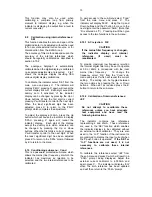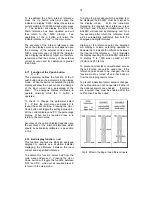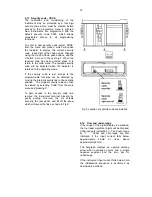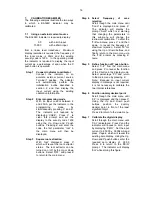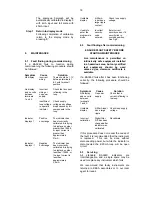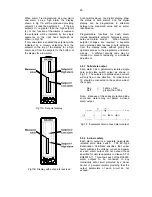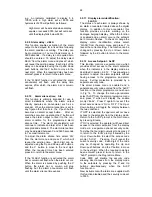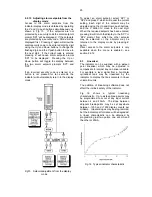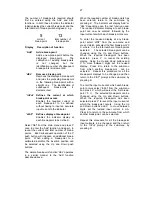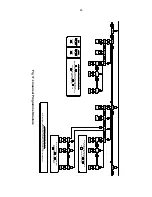
26
Inclusion of the lineariser software extends the
'CAL' and 'SEt' functions as shown in Fig 17,
and the root and null functions are omitted.
from the main menu.
As with a linear
indicator, calibration may be performed with an
external calibrator using the 'CAL' function, or
from the internal references using the 'Set'
function.
9.3.1 Calibration using an external current
source: CAL
This method allows direct calibration with a
current source, and
is preferred
when
traceability is required.
If the exact system
non-linearity is unknown, the method also
allows direct calibration from the variable to be
displayed. e.g. The output from a level sensor
in an irregular tank may be displayed in
linear volumetric units by filling the tank with
known incremental volumes and calibrating the
indicator to display the sum of the increments
at each break-point.
The number of break-points required must first
be entered using the Add and dEL functions.
In both these functions the indicator initially
displays the current break-point and the total
number of break-points being used. e.g.
5 13
current total number of
break-point break-points
Display Description of function
'Add'
Add a break-point
Adds a new break-point before the
displayed
break-point.
The
calibration of existing break-points
is
not
changed,
but
the
identification
number
of
all
subsequent
break-points
is
increased by one.
'dEL'
Remove a break-point
Removes the displayed break-point
and joins the preceding break-point
to the following break-point with a
straight line.
The identification
number of all subsequent break-
points is decreased by one.
To add a break-point select 'CAL' from the
main menu and press
P
to enter the 'Add'
function; press
P
again to reveal the current
and total number of break-points.
Each
subsequent operation of the
P
push button will
introduce an additional break-point.
When
adding a break-point to a calibrated indicator,
the insertion position can be selected using the
Up
and
Down
push buttons.
The delete break-point function dEL operates
in a similar manner to the Add function
described above.
When the required number of break-points has
been entered, return to the sub-menu by
pressing
E.
The indicator will display 'Add' or
'dEL' depending upon the last function used.
Each break-point can now be programmed.
Select 'PtS' from the sub-menu and press
P
which will select the first break-point '0
n',
where n is the total number of break-points
entered.
The selected break-point can be
changed using the
Up
and
Down
buttons.
When the required break-point has been
selected press
P
.
Set the indicator input
current to the exact value at which the break-
point is to occur, and adjust the indicator
display using the
Up
and
Down
buttons and
P
to move between digits. When the required
display has been set, press
E
to enter the
information and return to the sub-menu from
which another break-point can be selected.
Repeat this procedure for each break-point,
and then return to the main menu by pressing
E
twice.
9.3.2 Calibration using internal references:
SEt
This function enables the break-points to be
adjusted without the need for an accurate
external
current
source.
Throughout
calibration the indicator input current may be
any value between 4 and 20mA.
The accuracy of this method depends upon the
accuracy of the internal references which
should be calibrated periodically against a
traceable external current source with a
resolution of at least 0.4µA.
See section
6.10.2
Summary of Contents for ba326c
Page 11: ...11...


